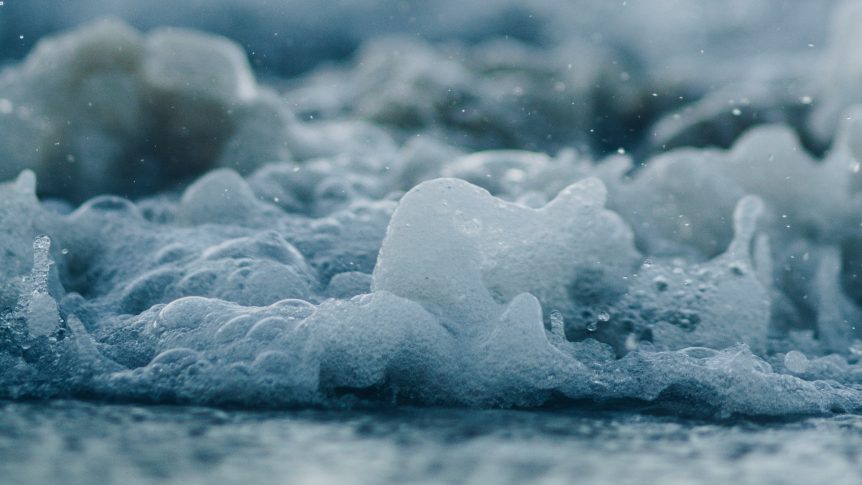The Hydraulics Lab at Scripps Institution of Oceanography is probably one of the best places on the Earth to study bubbles and aerosols. When I joined CAICE in 2014, my first experiment was in the Hydraulics Lab during a study called “IMPACTS” — You can read previous blogs to learn more about it! Interestingly, my experiences have come full circle as I soon will be leaving to start a faculty position in China but my last CAICE experiment is also taking place in the Hydraulics Lab. I feel very fortunate to have had so many opportunities to study great science relating bubbles and aerosols in this beautiful place.

Bubble formation and bursting is a fascinating process. You can easily see this process if there is an interface between liquid and gas. When ocean waves hit the water surface, bubbles form and burst. When raindrops hit soil, bubbles form and burst. When you open a soda can, bubbles also form and burst. Bubble bursting can eject many aerosols in a variety of sizes. However, people do not fully understand how this process actually happens. In my opinion, no one knows the exact production mechanism of submicron aerosols following bubble bursting. Bubbles not only produce aerosols in the air, but can also enhance gas emission from water. Some of these gases could go on to form secondary aerosol in the air. This process is also fascinating and extremely important to the climate. It will be a major focus for CAICE during the next five years.

Life in Hydraulics Lab is not always easy, but it is fun! Long working hours, pump noise and high temperature do not hinder our curiosity to explore unknowns. Experiments within this facility are always large and involve many people. It is really a fun experience to work with a lot of people where everyday everyone is excited about science and always try to help. I am sure we have a lot of new findings when the experiment concludes!
— Xiaofei Wang, Assistant Project Scientist at CAICE

